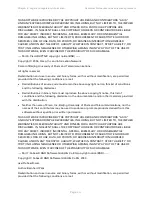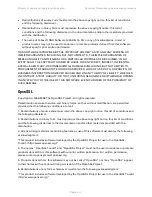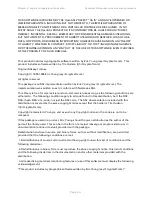
Chapter 4: Legal and regulatory information
Compliance with safety standards
Calculation of power density
The following calculation is based on the ANSI IEEE C95.1-1991 method, as that provides a worst
case analysis. Details of the assessment to EN50383:2002 can be provided, if required.
Peak power density in the far field of a radio frequency point source is calculated as follows:
Where:
Is:
S
power density in W/m
2
P
maximum average transmit power
capability of the radio, in W
G
total Tx gain as a factor, converted
from dB
d
distance from point source, in m
Rearranging terms to solve for distance yields:
Calculated distances and power compliance margins
shows calculated minimum separation distances, recommended distances and resulting
margins for each frequency band and antenna combination. These are conservative distances that
include compliance margins. At these and greater separation distances, the power density from
the RF field is below generally accepted limits for the general population.
Tx burst – maximum average transmit power in burst (Watt)
P – maximum average transmit power capability of the radio (Watt)
G – total transmit gain as a factor, converted from dB
S – power density (W/m
2
)
d – minimum distance from point source (meters)
R – recommended distances (meters)
C – compliance factor
2
4
.
d
G
P
S
π
=
S
G
P
d
.
4
.
π
=
Page
4-25






























